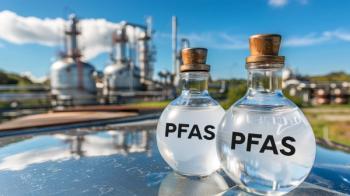
Remembering Phil Williams (1933–2025), Visionary Scientist Who Transformed Near-Infrared Spectroscopy
Key Takeaways
- Williams revolutionized grain quality assessment by implementing near-infrared spectroscopy for rapid, non-destructive testing, replacing traditional chemical methods.
- His work at the Canadian Grain Commission set a global precedent for NIR-based calibration and validation, influencing industrial practices worldwide.
Phil C. Williams (1933–2025) was an internationally recognized pioneer in near-infrared spectroscopy whose visionary work transformed grain analysis from chemical assays to rapid, environmentally responsible spectroscopic methods. His lifelong commitment to scientific rigor, mentorship, and practical innovation has left an enduring legacy that continues to shape industrial spectroscopy for grain analysis that impacts the global economy.
Philip Carslake Williams was an eminent figure in near-infrared spectroscopy (NIRS), whose pioneering work bridged laboratory innovation and industrial application. His passing onOctober 1, 2025 was announced by the International Council for Near Infrared Spectroscopy (ICNIRS) (1).
Early Life and Career Beginnings
Williams was born on 26 May 1933 in Mountain Ash, Wales (2). After completing his doctoral studies at Aberystwyth University in the late 1950s (3), he first worked in Wagga Wagga, Australia, before emigrating to Canada in 1965, joining the Canadian Grain Commission (CGC) in Winnipeg (3,4).
At the Grain Research Laboratory of the CGC, he was appointed Chemist-in-Charge of Protein Testing in 1970 (4). During his long tenure, from 1965 to 2002, Williams modernized the Canadian cereal-quality assessment system and introduced objective, instrument-based testing for wheat and barley (4,5).
Pioneering Work in Near-Infrared Spectroscopy
Among Williams’ most significant achievements was the industrial implementation of near-infrared transmittance (NIT) methods for rapid, non-destructive testing of grain protein and moisture content (4,6).
At a time when classical Kjeldahl nitrogen method required hours, was a hazardous procedure, and produced chemical waste, Williams (along with Karl Norris) envisioned an approach capable of producing equivalent accuracy in seconds. He described the early adoption of NIRS as follows, “We heard of a miracle instrument that would do a protein test in 10 seconds, with accuracy of 0.1%. The Neotec Grain Quality Analyzer was evaluated in February 1972.” (7)
By the mid-1970s, NIRS had been successfully deployed across Canadian Western Red Spring (CWRS) wheat terminals, where it replaced the then slower and more polluting laboratory procedures (4,6). These were among the earliest examples of industrial-scale NIR calibration and implementation, demonstrating both scientific rigor and commercial practicality. The technique involved accurate spectroscopy and sample handling, as well as rigorous application of calibration chemometrics.
The Canadian Grain Commission’s publication Recent Advances in Near-Infrared documents Williams’ pivotal role in applying NIR spectroscopy to cereal grain analysis (8).
Broader Impact and International Collaboration
Williams’ influence extended well beyond Canada. He collaborated with the International Center for Agricultural Research in the Dry Areas (ICARDA) in Aleppo, Syria, and advised maize and wheat breeding programs in Mexico under the World Health Organization (WHO) and International Development Research Center (IDRC) (5).
His research extended to on-line NIRS analysis of liquid hog-manure nutrients, underscoring his commitment to expanding NIRS beyond its traditional agricultural scope (9).
Mentorship, Character, and Professionalism
Beyond his technical contributions, Williams was well-known for his humor, mentorship, generosity, and methodical rigor. The ICNIRS memorial tribute described him as someone who “…devoted much of his life to training and mentoring many scientists worldwide, sharing his practical experience and methodical rigor. His warmth, openness, and vision left a profound mark on our community.” (1)
He authored numerous papers and practical guides, including How It All Began, a reflective essay tracing the introduction of NIRS to Canadian grain laboratories (7). His focus on method validation, calibration integrity, and standardization continues to influence industrial NIR spectroscopy today.
Honors and Recognition
Williams received widespread recognition for his scientific and industrial achievements as follows:
- Inducted into the Canadian Agricultural Hall of Fame (CAHF) in 2021 (5).
- Fellow of the International Council for Near Infrared Spectroscopy (ICNIRS) (5).
- EAS Award for Outstanding Achievements in NIR/Vibrational Spectroscopy (10)
- Namesake of the wheat variety “AC Phil”, honoring his service to Canadian agriculture (5).
- Namesake of the “Phil Williams Award in Applied Research”, established by the American Association of Cereal Chemists International (AACC Intl.) (5).
Table I: Chronology of Williams’ Career
Legacy
Williams’ career exemplifies how rigorous science can reshape industry. His efforts replaced time-consuming and polluting wet-chemical assays with rapid, clean, and quantitative spectroscopic methods, setting a global precedent for NIR-based calibration and validation (4,6).
His combination of methodical discipline, instrumental insight, and mentorship established a template for industrial chemometric practice that endures today. As the field moves toward AI-driven calibration and data fusion, Williams’ foundational principles—precision, transparency, and reproducibility—remain central to modern analytical spectroscopy.
He will be remembered as both a pioneer and a teacher whose legacy continues to inspire generations of spectroscopists and analytical scientists worldwide. We will miss you, Phil.
Nine outstanding Canadians were officially inducted into the Canadian Agricultural Hall of Fame Nov. 21, 2021 at a ceremony in Winnipeg to showcase the 2020 and 2021 recipients. The 2020 inductees were Jay Bradshaw, James Halford, Dr. Bryan Harvey and Dr. Douglas Hedley. The 2021 inductees were Gordon Bacon, Dr. Don Buckingham, Stan Eby, Johanne Ross and Dr. Phil Williams. Photo Credit: Canadian Agricultural Hall of Fame (5). Citation reads: “Dr. Phil Williams is an internationally recognized pioneer and authority on near infrared spectroscopy (NIRS) technology that revolutionized the Canadian cereal industry’s ability to accurately measure and compensate Canadian producers for wheat protein. For nearly 40 years, Williams worked for the Canadian Grain Commission, Grain Research Laboratory in Winnipeg, MB. His NIRS technology led to “on-the-spot” testing for CWRS wheat protein at grain terminals–a system used in Canada since 1976 and later extended to elevators….”
References
(1) International Council for Near Infrared Spectroscopy (ICNIRS). Phil Williams Passed Away on 1st October 2025; ICNIRS News, 2025. Available online:
(2) NecroCanada. Philip Carslake Williams, May 26, 1933 – October 1, 2025 (92 years old); NecroCanada Obituaries, 2025. Available online:
(3) International Association for Cereal Science and Technology (ICC). Curriculum Vitae: Dr. Phil Williams; ICC Active Fellows Series, 2020. Available online:
(4) RealAgriculture. Four Decades of Protein Testing Method Improvements: Dr. Phil Williams Enters the Ag Hall of Fame; Real Agriculture, 2021. Available online:
(5) Canadian Agricultural Hall of Fame (CAHF). Dr. Phil Williams – Inductee 2021; CAHF, 2021. Available online:
(6)Canadian Grain Commission (CGC). Grain Research Laboratory: Protein Testing History; CGC Technical Reports, 1975–1985.
(7) Williams, P. C. How It All Began. Proceedings of the International Conference on NIR Spectroscopy, 2015. Available online:
(8) Canadian Grain Commission. Recent Advances in Near-Infrared Spectroscopy; Government of Canada Publications, 1998. Available online:
(9) Williams, P. C.; et al. On-Line Analysis of Liquid Manure Nutrients Using NIR Spectroscopy. J. Near Infrared Spectrosc. 2003, 11 (4), 215–222.
(10) Eastern Analytical Symposium Award Page. Available at:
Newsletter
Get essential updates on the latest spectroscopy technologies, regulatory standards, and best practices—subscribe today to Spectroscopy.





